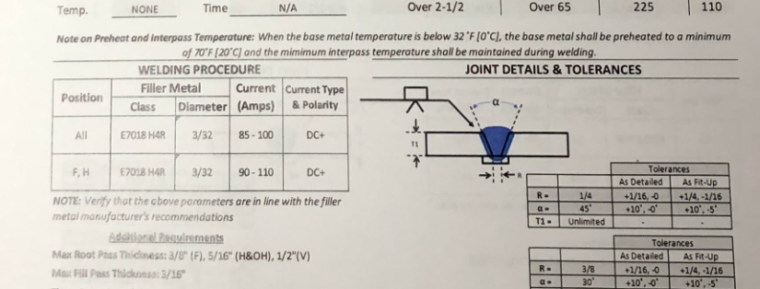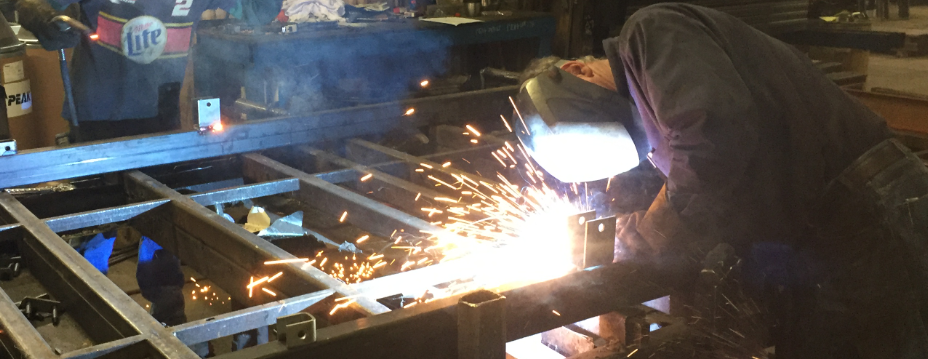
Controlling weld quality is not always an easy task. Many fabricators struggle to manage the amount of rework, the discrepancies from one batch of product to the next, and the varying levels of productivity and workmanship amongst their welders.
This inability to control weld consistency is not surprising. Welding has more than 20 variables that can affect the quality of a weld. These variables include, but are not limited to: amperage, voltage, travel speed, CTTWD, shielding gas, shielding gas flow rate, travel angle, work angle, preheat, PWHT, electrode type, electrode diameter, joint details and base material chemistry. On top of that, you have varying skill levels between welders which further complicates having consistent quality.
Whether you are a welding engineer, a plant or operations manager, a welding supervisor, a welding lead, a quality control manager or any other professional in charge of improving quality in welding operations you need to have a system. A welding quality control system starts with clearly defined quality standards. These standards need to be communicated to the welders and they must be provided the tools, equipment, training and everything else necessary to meet those quality standards. These standards can be determined by the fabricator, by their customers, or by structural codes. For other methods you can take a look at 6 Levels of Welding Quality Standards.
In controlling weld quality we usually run into the follow two issues when first starting to work with fabricators:
- No defined quality standards – weld quality is subjective, or is just what’s considered “typical”
- Defined standards without a system to help welder consistently meet those standards
There are 5 basic building blocks in a properly developed welding quality control system.
- Acceptance Criteria
- Procedure Qualification Records (PQRs)
- Welding Procedure Specifications (WPSs)
- Welder Performance Qualification Records (WPQRs)
- Inspection Procedures
Acceptance Criteria – before you can start developing welding procedures you need to define an acceptable weld. You need to determine if there will be an allowance for discontinuities like porosity, undercut, reinforcement and overlap. Or if certain discontinuities are unacceptable regardless of length like cracks, undersized welds, lack of fusion, and other. The acceptance criteria set the minimum level of quality. Acceptance criteria must also be developed for the qualification of welding procedures if it requires testing different than the acceptance criteria for production welds, which is typically the case.

Before production welding starts quality standards must be in place. These standards are the basis for controlling weld quality.
Procedure Qualification Records (PQRs) – once the acceptance criteria is set we develop our welding procedures. A weld test is conducted to prove out the welding procedure. The parameters used are documented and, provided that the weld test passes all the requirements, a PQR is created. This document is proof that the developed welding procedure can produce sound welds.
Welding Procedure Specifications (WPSs) – from the PQR we create one or several WPSs. The PQR states the specific variables that were run while doing the weld test. The WPS will have a range for these variables. These ranges may vary depending on the codes or standards you are following. For example, if the PQR was done at 250 amps and 30 volts your WPS may have ranges of 225 – 275 amps and 27 to 33 volts. Keep in mind that it is OK to go tighter on these ranges for added consistency. The biggest key to success is not just having WPSs but actually using them in production. Many times these documents get presented as a requirement to win a contract and never seen again.

WPSs provide instructions to the welder regarding process parameters, technique, joint preparation, interpass cleaning, preheat requirements, weld size and many other important variables.
Welder Performance Qualification Records (WPQRs) – it is important to note that the use of qualified WPSs does not necessarily guarantee sound welds. As the commentary section of AWS D1.1 states “fabrication quality is still required.” We need to make sure our welders can take the qualified WPS and make sound welds. We get this assurance through welding tests administered to the welders. If they pass the requirements of these tests a WPQR is created which states they are capable of producing acceptable welds using the qualified WPS.
Inspection Procedures – regardless of having PQRs, WPSs, and WPQRs there will always be situations where unacceptable welds are made. An adequate inspection procedure is necessary. This inspection procedure should not be the sole responsibility of the quality control department. It starts with the welder. Welders can inspect before, during and after welding which makes them the best inspector. Other personnel must also be involved which include welding supervisors, welding inspectors, quality personnel and others.
If you can manage to have these 5 building blocks in place you will be further ahead than most. Good luck!
Reference: Welding Procedure Development for Non-Welding Engineers

Please note: I reserve the right to delete comments that are offensive or off-topic.